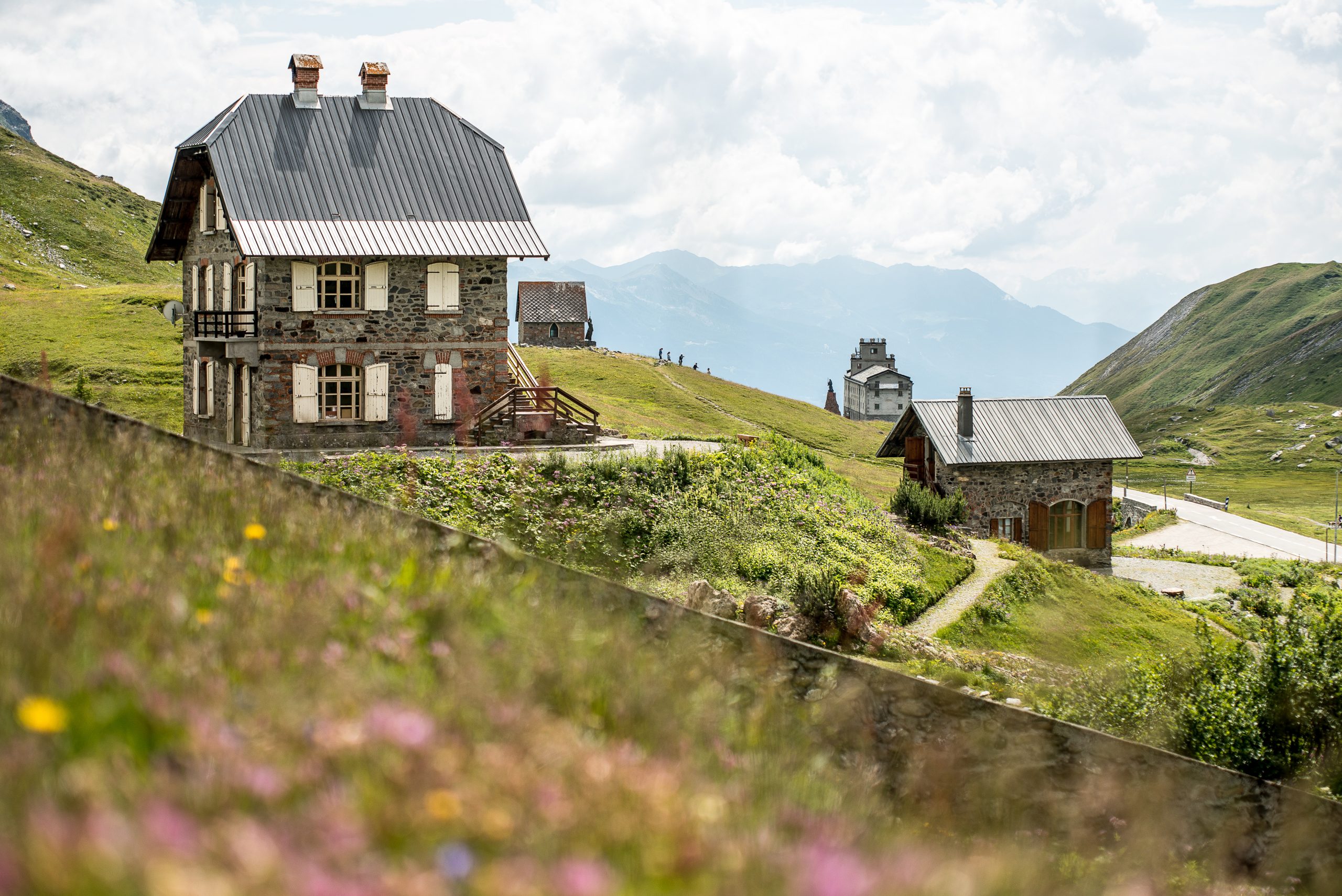La Rosière’s History
The history of skiing and tourism in La Rosière
Skiing, the first tracks in the commune of Montvalezan
In 1878, during the Universal Exhibition in Paris, French mountaineer Henri Duhamel saw some skis in the Norwegian pavilion. The French alpine troops, “Les Chasseurs Alpins” quickly got skis to move quicly form a point to another one in the snow. This was the starting point for downhill skiing in France. At the Fort de la Redoute Ruinée, near the current Fort chairlfit, the French army set up a ski school to learn ski to the soldiers. In Montvalezan, things began to take shape in 1920. A group of young skiers decided to create a society called the “Union Sportive de Montvalezan”. In the next decades, they organise the first ski run for cross-country skiers. In the 1950’s, the first downhill skiing competitions took place from Les Eucherts down to Le Chatelard or Hauteville.
Houses and chalets
Up until the 1960s, all of Montvalezan’s families were farming families.
Their chalets or houses were built according to their plot of land, the proximity of a water source and ease of access. The houses were built very close to one another, to keep the best part of the land for farming. The chalets in the high-altitude villages of Les Eucherts and La Rosière (alt. 1,850m) were only used during the summer months. These chalets were not built out of wood, unlike the word “chalet” suggests, but rather out of local stone and “lauze” slate, which makes Montvalezan’s dwellings so characteristic. They were built to last in the strong wind and heavy snow falls of our winters.
Development of skiing
In 1950, La Rosière was made up of only a handful of small residential chalets. In 1954, Jean Arpin created the Relais du Petit St Bernard bar, and in 1955 Abbot Poupon built La Savoyarde family holiday centre in Les Eucherts. With these two establishments in place, summer activities in the village started to take shape. But winter tourism could not kick off without ski lifts. Some young local councillors, who were highly motivated and experienced skiers, embarked on a project to create a ski resort in La Rosière. The Poletta drag lift was put into action on 23rd December 1960 and a ski resort was born! Up until 2002, the resort was managed entirely by the commune of Montvalezan/La Rosière and has gradually been developed thanks to the drive of its inhabitants.
In the mid 1960’s thanks to both private and public investments there is three ski lifts on the ski area, which goes until the top of Roc Noir. In 1964, the township of Montvalezan chooses The SERMA, a private investor, to develop further the resort and the ski area. The investor creates a neighbourhood made of 57 wooden chalet (Le Gollet) to offer something different than the other ski resort of the valley and 3 new drag lifts that allow the skiers to access the Col de La Traversette and Fort de La Redoute Ruinée.
In 1975, new local councillors decide to buy the SERMA to control the future of La Rosière and its ski area. Two years later, the French State allows the resort to go from 2000 touristic beds to 5000. In the 1980’s the township decide to built the first chairlifts of the ski area.
Liaison with Italy
In 1985, following the signature of an agreement between Montvalezan, Séez and La Thuile, the Chardonnet chairlift and Bellecombe drag lift were installed to enable skiers to cross the border. La Rosière thus created an international ski area with the neighbouring Italian resort of La Thuile, in the Aosta Valley. From that moment on, mountain lovers have been able to enjoy the freedom of cross-border skiing! During the 1990’s new accomodation open in the Mannessier area and the Fort chairlift make the access to the slopes of this sector easier and more comfortable.
In 1995, the Tourist Office and the ski area are no longer directly managed by the township of Montvalezan, 5 years later, they become two separate entities. Since 2002, the ski area and the ski lifts are managed and developped by a private society named DSR for Domaine Skiable de La Rosière (French for La Rosière Ski Area).
In 2018, two brand new chairlifs and five new slopes are created under the Mont Valaisan, which is now the highest point of the ski area (2800m). This extension offers new freeride possibilities and more technical slopes.
Touristic development
In order to satisfy the ever-increasing demand for summer holidays in the mountains, incited by local initiatives, La Rosière set the ball rolling to extend its tourist services to both winter and summer seasons: a small touristic airport in 1971, tennis courts in 1975 a cinema and a fitness in 1989. In 1988, the first holes on La Rosière Golf Course were created, at the instigation of two of La Rosière’s inhabitants.
In 2006, Les Eucherts got bigger thanks to the building of the first 4-stars tourist residences and the ficilitis of Place des Eucherts such as the bowling alley and the ice rink.
A 4-seasons sledge is built at the entrance of the resort in 2019 and a year later the Lac du Repos ends the development of the Plan de l’Arc area.
Montvalezan’s athletes at the Winter Olympics
The Espace San Bernardo, which offers a wide variety of snowsports, has produced several generations of champions in a variety of disciplines. Some have now retired from competition, such as Olympic silver medallist Joël Chenal or three-time world freeride champion Manu Gaidet, but taking over the reins are the new generation of champions, who are just hitting the big time with the full support of their home resort.
